Nationality American Books Singular Images Role Scientist | Name Edwin Land Influenced Steve Jobs | |
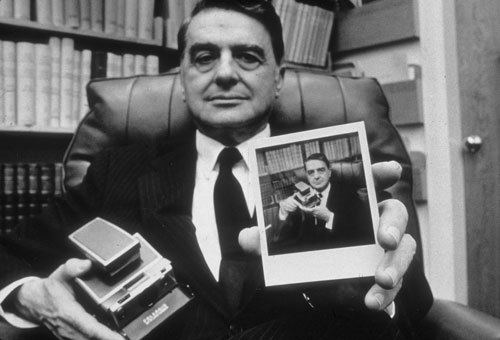 | ||
Notable awards Presidential Medal of Freedom (1963)IRI Medal (1965)Perkin Medal (1974)Harold Pender Award (1979)National Medal of TechnologyFellow of the Royal Society Spouse Helen Terre Maislen (m. 1929; 2 children) Similar People Steve Jobs, Stephen Benton, Mary Moorman | ||
Edwin h land in the long walk 1970 directed by bill warriner for polaroid corporation
Edwin Herbert Land, ForMemRS, FRPS, Hon.MRI (May 7, 1909 – March 1, 1991) was an American scientist and inventor, best known as the co-founder of the Polaroid Corporation. He invented inexpensive filters for polarizing light, a practical system of in-camera instant photography, and the retinex theory of color vision, among other things. His Polaroid instant camera went on sale in late 1948 and made it possible for a picture to be taken and developed in 60 seconds or less.
Contents
- Edwin h land in the long walk 1970 directed by bill warriner for polaroid corporation
- Edwin H Land Wikipedia audio article
- Life and career
- Lands company
- Contributions to photo intelligence
- Later years
- His death
- Public service
- Honors
- References
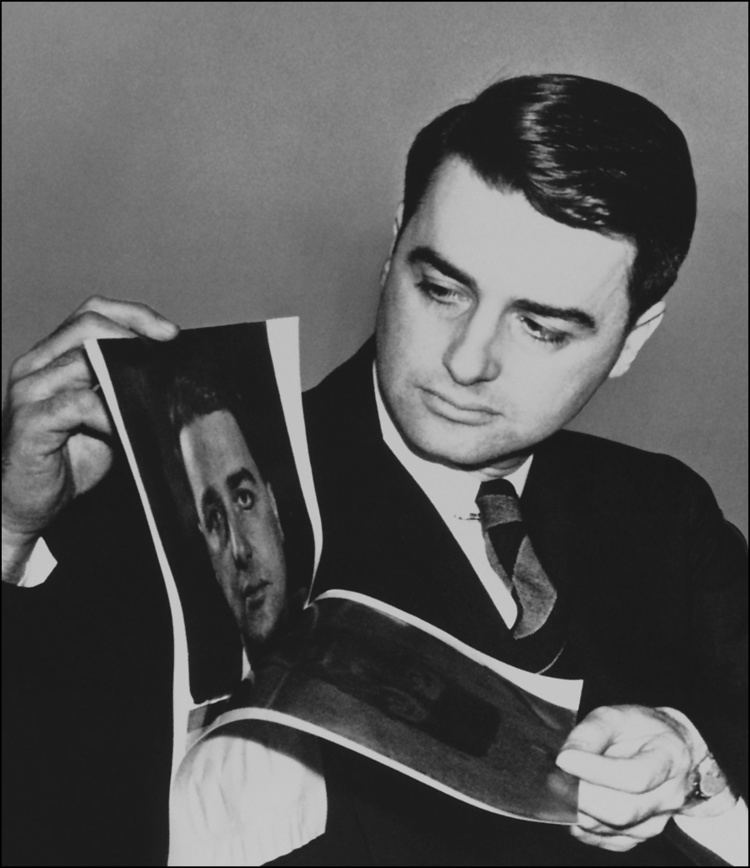
Edwin H. Land | Wikipedia audio article
Life and career
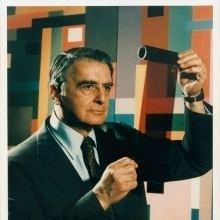
Edwin Land was born in Bridgeport, Connecticut to Martha (Goldfaden) and Harry Land, owner of a scrap metal yard; both his parents were of Eastern European Jewish descent. Land attended the Norwich Free Academy at Norwich, Connecticut, a semi-private high school, and graduated in the class of 1927. The library there was posthumously named for him, having been funded by grants from his family. He studied chemistry at Harvard University. After his freshman year, he left Harvard for New York City.
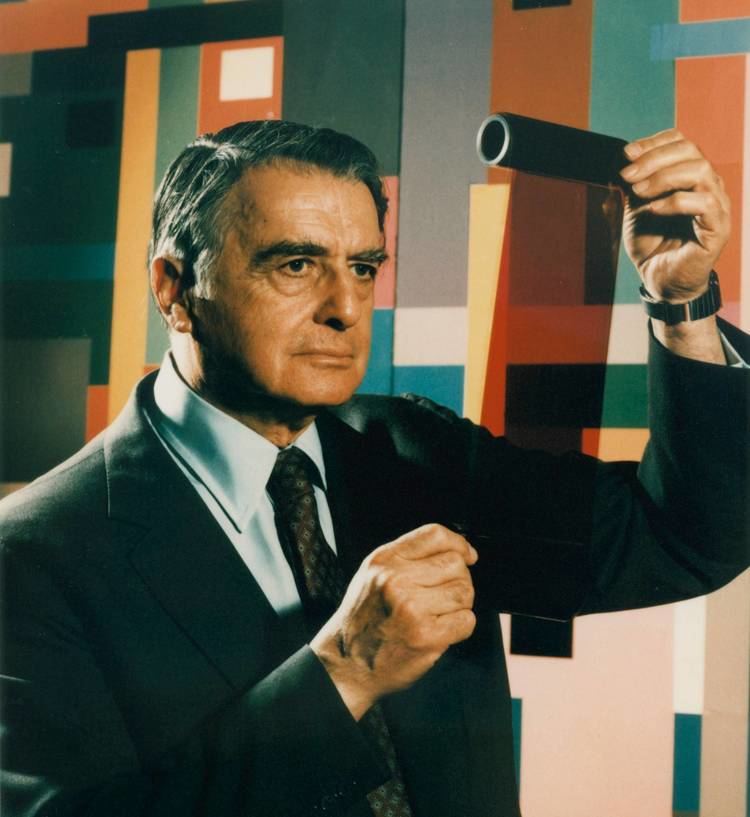
In New York City, he invented the first inexpensive filters capable of polarizing light which he called Polaroid film. He was not associated with an educational institution and lacked the tools of a proper laboratory, making this a difficult endeavor, so he would sneak into a laboratory at Columbia University late at night to use their equipment. He also availed himself of the New York Public Library to scour the scientific literature for prior work on polarizing substances. His breakthrough came when he realized that, instead of attempting to grow a large single crystal of a polarizing substance, he could manufacture a film with millions of micron-sized polarizing crystals that were coaxed into perfect alignment with each other.
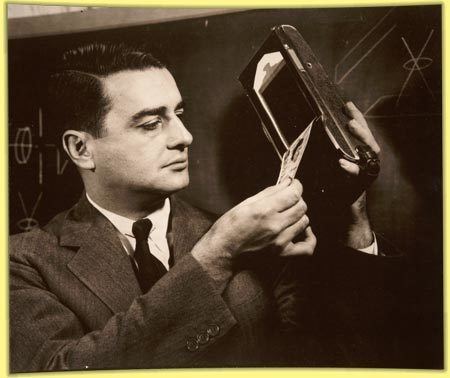
Land returned to Harvard University after developing the polarizing film, but he did not finish his studies or receive a degree. According to biographer Peter Wensberg, once Land could see the solution to a problem in his head, he lost all motivation to write it down or prove his vision to others. Often his wife would extract from him the answers to homework problems, at the prodding of his instructor. She would then write up the homework and hand it in so that he could receive credit and not fail the course.
Land's company
In 1932, he established the Land-Wheelwright Laboratories together with his Harvard physics instructor, George Wheelwright, to commercialize his polarizing technology. Wheelwright came from a family of financial means and agreed to fund the company. After a few early successes developing polarizing filters for sunglasses and photographic filters, Land obtained funding from a series of Wall Street investors for further expansion.
The company was renamed the Polaroid Corporation in 1937.
Land further developed and produced the sheet polarizers under the Polaroid trademark. Although the initial major application was for sunglasses and scientific work, it quickly found many additional applications: for color animation in the Wurlitzer 850 Peacock jukebox of 1942, for glasses in full-color stereoscopic (3-D) movies, to control brightness of light through a window, a necessary component of all LCDs, and many more. During World War II, he worked on military tasks, which included developing dark-adaptation goggles, target finders, the first passively guided smart bombs, and a special stereoscopic viewing system called the Vectograph which revealed camouflaged enemy positions in aerial photography.
A little more than three years later, on February 21, 1947, Land demonstrated an instant camera and associated film to the Optical Society of America. Called the Land Camera, it was in commercial sale less than two years later. Polaroid originally manufactured sixty units of this first camera. Fifty-seven were put up for sale at the Jordan Marsh department store in Boston before the 1948 Christmas holiday. Polaroid marketers incorrectly guessed that the camera and film would remain in stock long enough to manufacture a second run based on customer demand. All fifty-seven cameras and all of the film were sold on the first day of demonstrations.
During his time at Polaroid, Land was notorious for his marathon research sessions. When Land conceived of an idea, he would experiment and brainstorm until the problem was solved with no breaks of any kind. He needed to have food brought to him and to be reminded to eat. He once wore the same clothes for eighteen consecutive days while solving problems with the commercial production of polarizing film. As the Polaroid company grew, Land had teams of assistants working in shifts at his side. As one team wore out, the next team was brought in to continue the work.
Elkan Blout, a close colleague of Edwin Land at Polaroid, wrote: "What was Land like? Knowing him was a unique experience. He was a true visionary; he saw things differently from other people, which is what led him to the idea of instant photography. He was a brilliant, driven man who did not spare himself and who enjoyed working with equally driven people."
Contributions to photo intelligence
Beginning in the early years of the Cold War, Land played a major role in the development of photographic reconnaissance and intelligence gathering efforts. Projects included the Genetrix balloon borne cameras, the U-2 program, Corona and Samos photographic satellites, and the Manned Orbiting Laboratory. He was a frequent advisor to President Dwight D. Eisenhower on photographic reconnaissance matters.
Later years
In the 1950s, Edwin Land and his team helped design the optics of the revolutionary Lockheed U-2 spy plane. Also in this decade, Land first discovered a two-color system for projecting the entire spectrum of hues with only two colors of projecting light (he later found more specifically that one could achieve the same effect using very narrow bands of 579 nm and 599 nm light). Some of this work was later incorporated in his Retinex theory of color vision.
In 1957, Harvard University awarded him an honorary doctorate, and Edwin H. Land Blvd., a street in Cambridge, Massachusetts, was later named in his memory. The street is at one end of Memorial Drive, in Cambridge, where the Polaroid company building was located (over a mile west on Memorial Drive from Land Blvd.).
In the early 1970s, Land attempted to explain the previously known phenomenon of color constancy with his retinex theory. His popular demonstrations of color constancy raised much interest in the concept. He considered his leadership towards the development of integral instant color photography — the SX-70 film and camera — to be his crowning achievement.
Although he led the Polaroid Corporation as a chief executive, Land was a scientist first and foremost, and as such made sure that he performed "an experiment each day". Despite the fact that he held no formal degree, employees, friends, and the press respected his scientific accomplishments by calling him Dr. Land. The only exception was the Wall Street Journal, which refused to use that honorific title throughout his lifetime.
Land often made technical and management decisions based on what he felt was right as both a scientist and a humanist, much to the chagrin of Wall Street and his investors. From the beginning of his professional career, he hired women and trained them to be research scientists. Following the assassination of Martin Luther King, Jr. in 1968, he led Polaroid to the forefront of the affirmative action movement.
He had an artistic vision. In his laboratory he built giant studio cameras the size of bedroom closets that produced large format (20 x 24 inch) prints. He gave photographers free access to these cameras in return for some of the prints they produced. This practice was continued by the company; the result was the Polaroid Collection. Compiled since the 1970s, the collection grew to between 16,000 and 24,000 photos shot by some of the world's greatest artists and photographers, including Ansel Adams, Chuck Close, Robert Frank and Andy Warhol. The collection, an asset of the Polaroid Corporation, remained intact until 2010 when, in controversial circumstances, it was broken up and put up for sale in lots.
Despite the tremendous success of his instant cameras, Land's unsuccessful Polavision instant movie system was a financial disaster, and he resigned as Chairman of Polaroid on July 27, 1982.
In his retirement years, Land founded the Rowland Institute for Science.
His death
Land died on March 1, 1991 in Cambridge, Massachusetts, at the age of 81. Upon his death, his personal assistant shredded his personal papers and notes. He is buried in Mount Auburn Cemetery in Cambridge, Massachusetts, USA.
Public service
Land was:
